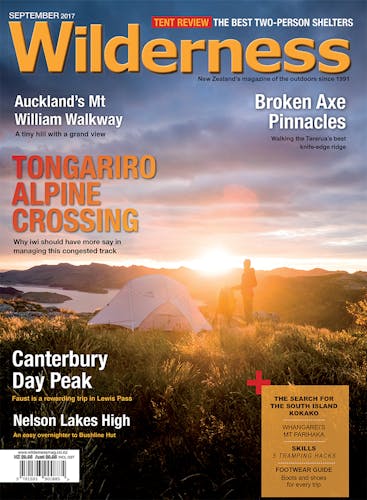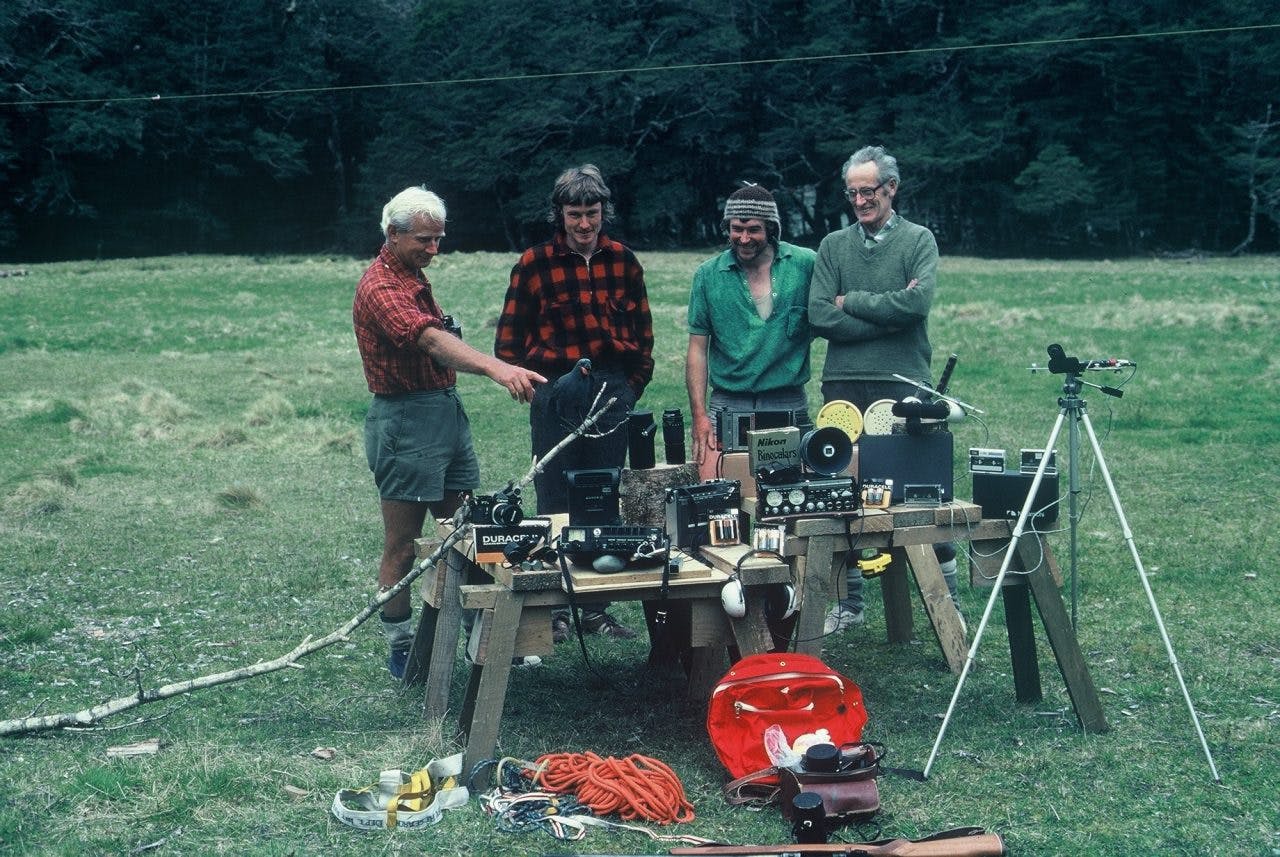In the wettest, most inhospitable parts of New Zealand, the search for the South Island kōkako goes on. Wilderness meets those who have never given up hope of finding alive this elusive bird.
The call of the kōkako is a stunning piece of music. Slow, haunting, bell-like and clear, it’s something you don’t forget, Rhys Buckingham says.
“The call is the most amazing thing. Full organ song, quite loud, beautiful notes, and unmistakable.”
That’s if you’re lucky enough to hear it. The South Island kōkako was, until very recently, officially extinct. But a small group of people are convinced it’s out there.
This time of year, Buckingham, a smiling man with a tuffet of salt and pepper hair and a face all lean planes of cheekbone, usually takes a rest from the hunt that began in the late 1970s, when he was out tramping in Fiordland and first heard the kōkako call as night fell.
But that doesn’t mean he’s not planning. The Mapua ecologist is dreaming up a new, months-long expedition to Fiordland, near Dusky Sound, where he hopes to find signs of the kōkako. He calls it “a daft last-ditch chance”.
His passion stems from a sighting on Stewart Island in the early 1980s, when one flew right over his head. He’s also seen telltale signs of moss grubbing, characteristic of kōkako. Buckingham and a group of die-hard enthusiasts have been on this hunt, privately and together, for decades, but a definitive photograph remains elusive.
If there are any left alive, Callaeas cinerea would be a biggish, blue-smoke bird, with a rakish black bandit mask and a long, curved tail. Larger than a tui but not as big as a wood pigeon, it would have vibrant orange wattles, distinguishing it from the North Island kōkako’s blue.
But it’s spoken of in the past tense by the likes of New Zealand Birds Online (NZBO). The South Island kōkako was once widespread and common, but predation by stoats, ship rats, and feral cats meant that by the last of the 1800s they were already scarce.
Mt Aspiring National Park in 1967 was the last confirmed sighting until one near Reefton in 2007, which the New Zealand Ornithological Society accepted as genuine in 2013. The society rates 11 other sightings from 1990 to 2008 as ‘possible’ or ‘probable’. In 2013, the Department of Conservation changed its official conservation status from extinct to data deficient, pending something it can authenticate.
Like many New Zealand birds, which evolved in the absence of mammalian predators, South Island kōkako lived in naïveté, unprepared for the ongoing assault of pests – not to mention capture for food, sale to collectors and museums, and reduction of habitat from forest clearing once humans arrived.
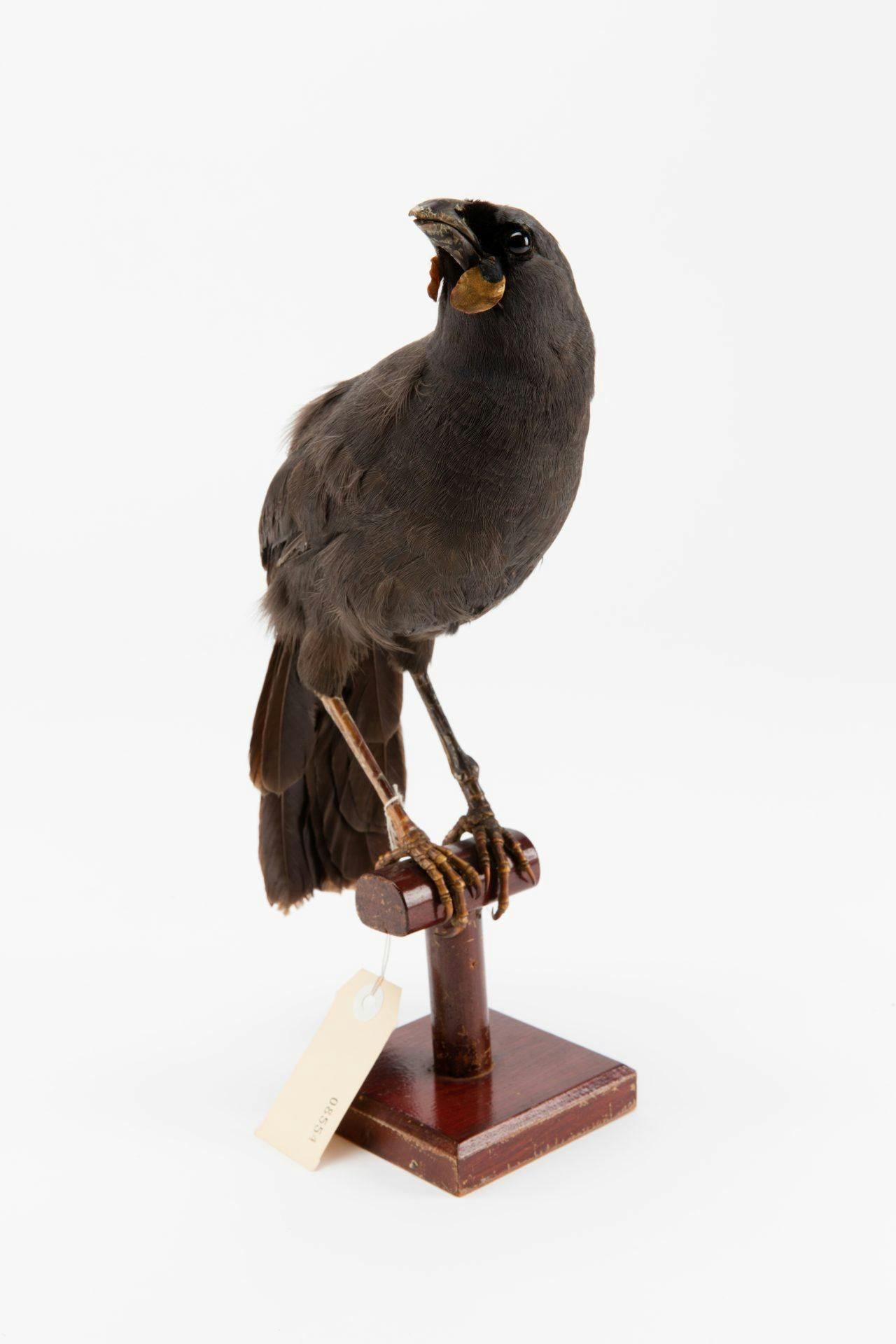
A specimen of a male South Island kokako. Photo: Auckland Museum
NZBO notes that most historical records were from the West Coast of the South Island, from north-west Nelson to Fiordland, but there were also reports of them in Marlborough, Banks Peninsula, Arthur’s Pass, Mt Cargill, Catlins, Southland and Stewart Island. They ranged from the coast to the treeline, in forest dominated by southern beech, southern rata, kamahi and rimu, as well as subalpine scrub.
One of New Zealand’s earliest conservationists, Thomas Henry Potts, described the male’s call as a “very sweet whistle, consisting of six notes, as ‘te, to, ta, tu, tu, tu’”. The female sings one note less, and the duets of a breeding pair have been said to be one of the longest of any songbird, up to an hour of bell-like tones in the mornings.
Earlier this year, Buckingham, Geoff Reid, and the South Island Kōkako Trust’s Ron Nilsson taped promising calls in the forest near Ahaura, on the West Coast. They’d set up audio recorders and got a promising response to playback of juvenile North Island kōkako calls: three clear notes. Listening to the recording, it’s a haunting fragment of bush music.
“There’s something interesting going on in there,” Buckingham says. “It’s certainly an anomaly. These calls are very kōkako-like: long flute notes and mews. It’s complex, and has got me quite curious.”
But complicating matters is the mimicking power of birds like tui, bellbirds, and kākā. If these calls, or others that people have heard out in the bush were made by tui – which reliably copy everything from ringing phones to barking dogs and human speech – the really interesting question, Buckingham says, is how long do tui remember? And can mimicry be passed between generations?
The hunt has been plagued by ill luck, too. A device containing a recording of a bird got wet and was ruined. Buckingham says he once saw a kōkako and carefully reached for his camera, only to find it had fallen out (he never found it). A feather found on Stewart Island is held at Te Papa, where genetic testing indicated that it was from a blackbird – but the morphology does not.
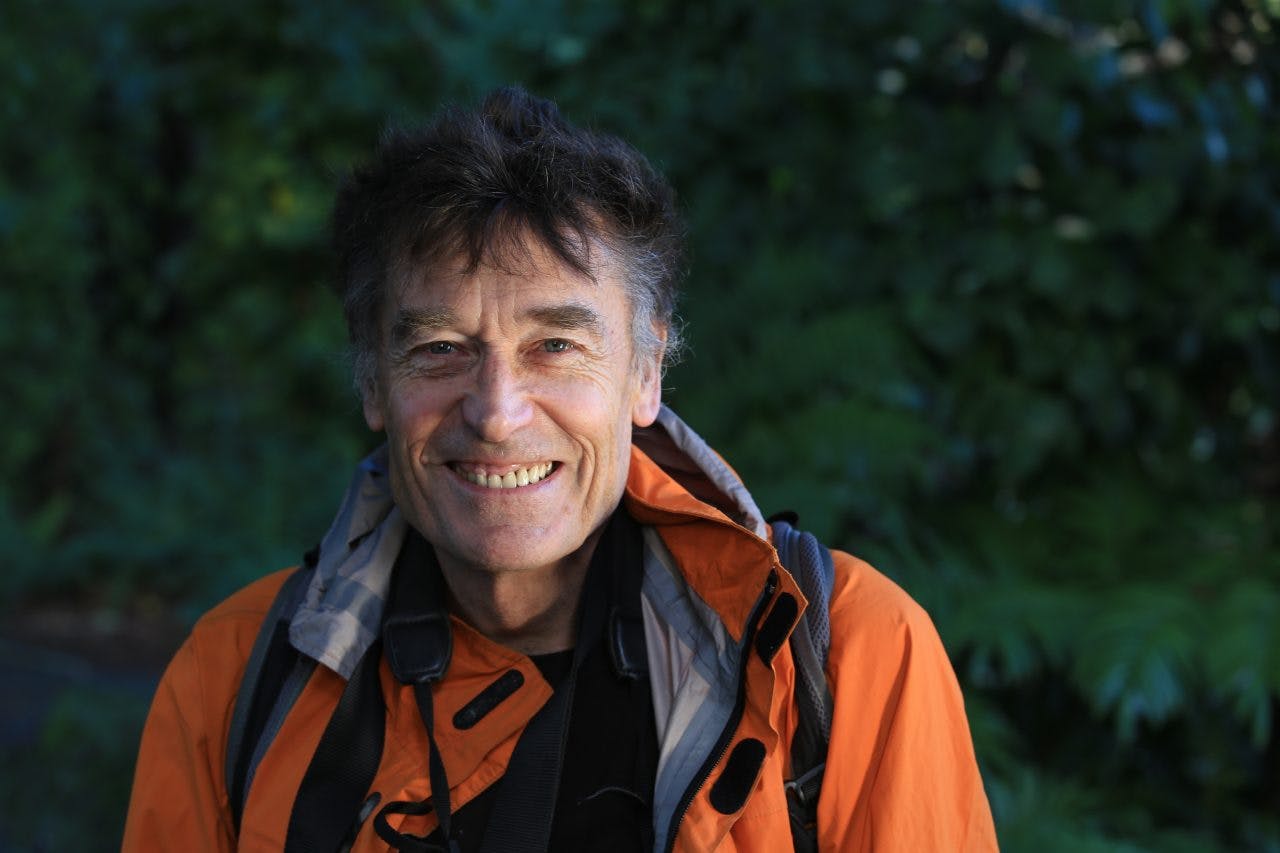
Rhys Buckingham has been searching for the South Island kōkako for almost 40 years. Photo: Doug Brooks
“We’ve ended up with two different answers from two different technologies,” says Colin Miskelly, the museum’s curator of vertebrates. There’s nothing definite on what the feather is, he says.
“Genetics comes back with blackbird, but looking through the microscope, we don’t think it is a blackbird. And we haven’t been able to get an answer for why that’s happened.”
The most likely reason, he says, would be that somehow the feather has been contaminated by a blackbird, maybe carried in its beak. But blackbirds don’t usually line their nests with feathers, and structurally, it’s more similar to kōkako than blackbird.
“The thing that intrigues me the most with this one is why are so many people reporting them now when they weren’t in the 1920s, 30s, 40s, 50s, and 60s?” he says.
“It’s only been from the 1980s onwards that people started reporting them. How many people reported UFOs before Roswell, 1940? It’s bizarre how many people are seeing or claiming to see South Island kōkako now when no one was half a century ago.”
Recently, that might have a lot to do with the $10,000 reward that the South Island Kōkako Trust has put up for evidence leading to confirmation that the bird is still there. It started with $5000 from Mohua Investments, which was matched by the Morgan Foundation in April this year. The reward will be paid once a panel of New Zealand’s expert ornithologists agrees that the bird exists.
Christchurch-based trustee Ron Nilsson has dedicated his entire life to New Zealand’s endangered species. He’s a former Wildlife Service ranger who worked on South Island saddlebacks, was one of Don Merton’s helpers on the Chatham Islands black robin recovery, and started and ran the black stilt project in the Mackenzie Basin.
“Eventually, even old guys have to retire at some stage, right? But I was aware that people kept reporting unusual calls and sightings, and because of my interest from a biological point of view I thought ‘Not all of this can be bull’.”
His first hunt was into north-west Nelson in 1972, and since then he says he’s developed a fair bit of knowledge in how to find a bird that doesn’t want to be found.
The South Island kōkako is the shy and retiring type; mostly vegetarian. It’s a bird that minds its own business. It wouldn’t be the type to cluster around humans for disturbed bugs like robin and fantail, he says.
It doesn’t sing often, but when it does, he adds, it emits low- and high-frequency calls that are outside the range of the human ear.
“If there were a pair of them, for argument’s sake, they could be corresponding with each other quite happily, and us humans wouldn’t know because of the frequencies.
“We know it’s in there; in that period I sighted it on a couple of occasions and have heard it probably a dozen more times. Because of my experience working with endangered birds, I’m confident it can’t be anything else.”
Could it be a bellbird? A tui?
“Yes, at times it sounds like those, but there are some quintessential calls that it makes that only it makes and nothing else. Also, its behaviour is unlike other birds. It has a very flighty sort of behaviour. It flits around.”
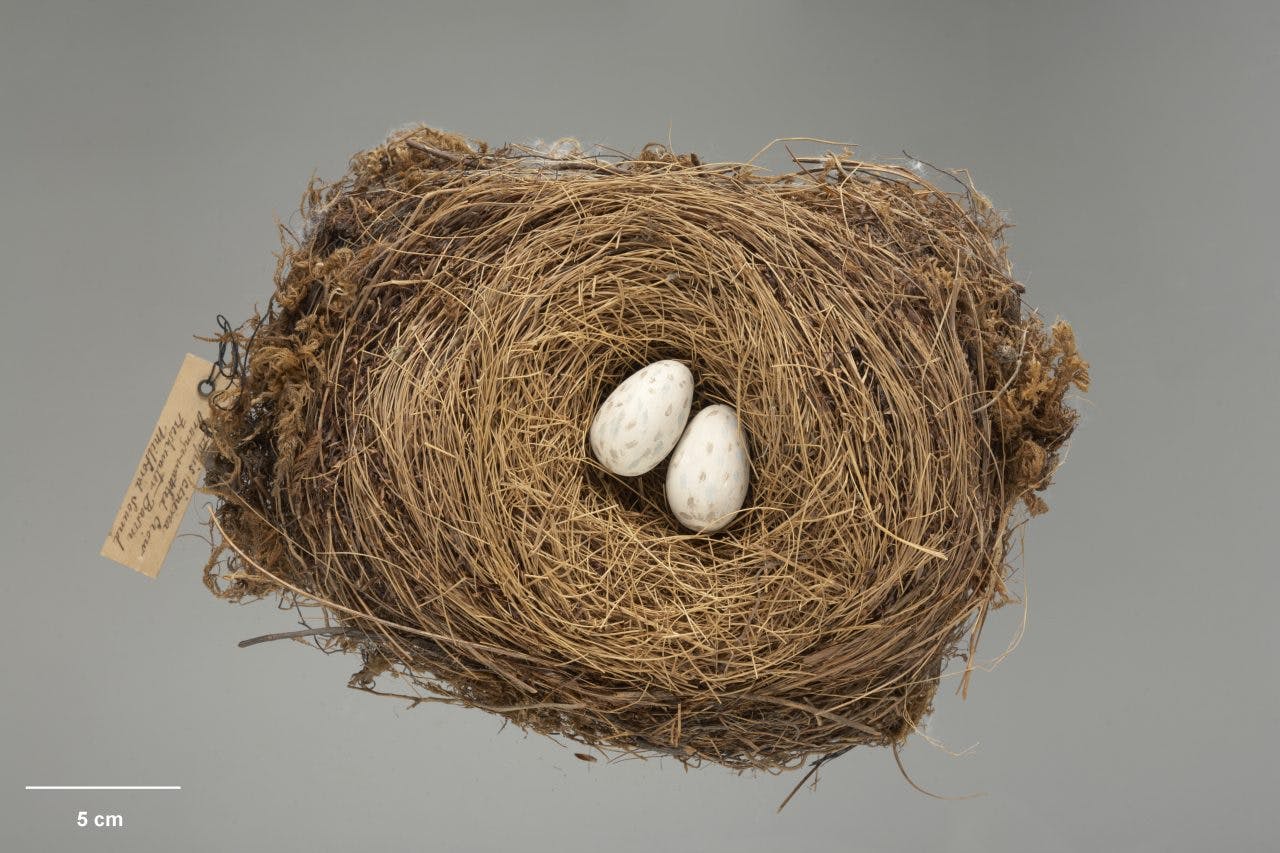
The nest of the South Island kokako, with replica eggs. Collected from Freshwater Basin, Milford Sound in January 1873 by Thomas Potts. Photo: CC BY-NC-ND licence. Te Papa (OR.029159)
Once, on the West Coast, he saw a bird fly across an old Forest Service road and he thought ‘Gosh, that looks like kōkako’.
“It sounds ridiculous to say that but I couldn’t think of anything else it might be.”
Buckingham was there, and Nilsson told him: ‘I think I’ve just seen a kōkako’.
“We walked 30 or 40m up this forestry road, and out of the edge less than 100m away came this beautiful, beautiful call. It consisted of three or four notes. And it can’t be anything else when you hear it like that.”
Over the next years, he began to collect reports from “all sorts of people all over the place” and gradually put them into a database.
“Some are rubbish, but not all of them. In any one year you’d end up with two or three good-quality encounters and it can’t be explained away by anything else. There is a lot of birds that predators have wiped out, such as huia, and there’s no sign those are alive. But with kōkako, there’s reason to believe they could be.”
In the end, they had so much information – about 200 incidents – that a group got together and formed a trust, and it’s trying to find money to run trips and publicise the search.
DOC director-general Lou Sanson says DOC is supporting efforts to find the South Island kōkako by helping keen ornithologists who are part of the Friends of Cobb group.
“The keen birders do a lot of volunteer monitoring work for DOC in Kahurangi National Park. For days at a time they monitor bird recovery after 1080 drops and this work takes them into areas which are considered likely hot spots for a kōkako sighting.”
Recently, DOC organised a remote sound sensor for the volunteers to record bird song so they can monitor the possible presence of kōkako, even when they can’t be there in person.
He says DOC would support efforts for recovery if there is proof of living kōkako.
“It would be an incredible discovery,” Sanson says. “I’m continually amazed at the dedication of Rhys Buckingham and other enthusiasts in their focus on searching for the South Island kōkako over all these years. I’ve personally participated in three expeditions.
“The regular large-scale pest control work that DOC has carried out over recent years as part of the Battle for our Birds will keep pest numbers down and give the species the best possible chance of still being out there. Good on the Morgan Foundation and the Kōkako Trust for putting up the reward.”
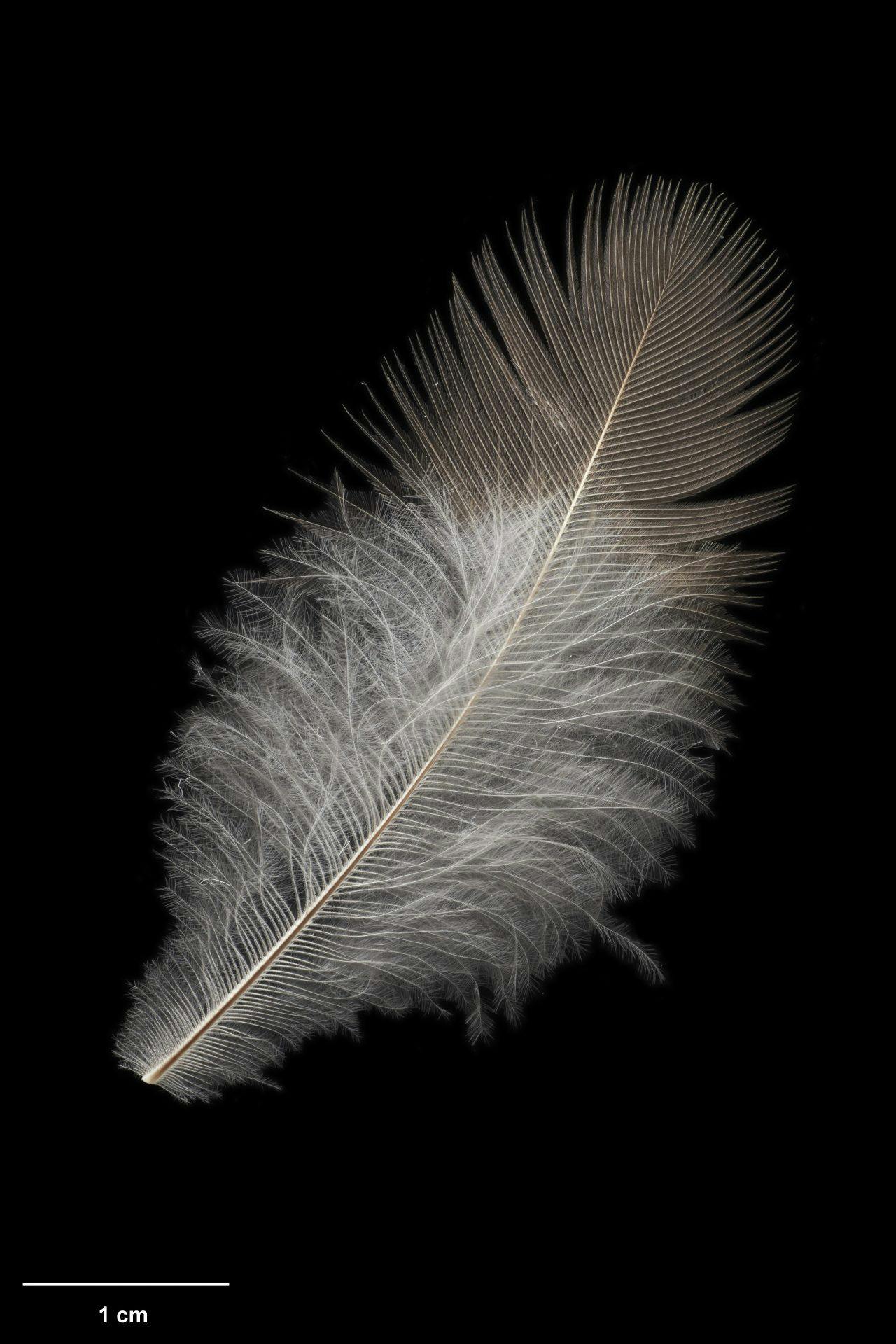
South Island kokako feather collected from Stewart Island in 1988. Photo: CC BY-NC-ND licence. Te Papa (OR.029399)
Sometimes, Nilsson says, he goes about his days accepting that it’s extinct. “But along comes another encounter and you think ‘Oh, it’s still there,’ – and then as a biologist, you have to turn around and say ‘How can we prove it? And should we prove it?’
“But I come from a background where black robins, black stilts and kākāpō wouldn’t be there if we hadn’t done the work, and with a little bit of help it is possible to actively manage these things – if we had a little bit more money.
“This is a bird that probably lives only 20-odd years, so in my lifetime I have glimpsed it two or three times and heard it half a dozen times, and that’s it. That’s after spending a lot of time in the bush.
“Why do I keep doing it? Curiosity. They have something going for them. They keep surviving; they should have been dead 100 years ago and they’re not. So they’re tenacious little birds. I just think they deserve to be saved along with the others.”
Meanwhile, Buckingham is busy planning his trip to one of the most remote and fractured parts of the country. He’d love some sponsorship – a float plane would make it much easier to get in.
“I want to pick on the wettest, most miserable place,” he says.
He believes our most vulnerable species – kiwi, rock wren, whio – are being pushed back and surviving in areas of high rainfall and high altitude, less habitable to predators. Fiordland was where he first saw the bird, and he wants to find the proof to enable everyone else to catch a glimpse too. On Google Earth, he’s checked out the terrain of his chosen spot – and it looks perfect for kōkako.
What to look for
Want to join the hunt for the South Island kōkako? Here are a few tips to help you on your way (and if you spot one, log your encounter at www.southislandkokako.org).
Size Larger than a tui and smaller than a pigeon.
Shape Long legs, relatively long tail, short rounded wings in flight, short stocky beak with downward curve.
Colour Dark grey or grey-blue with black facial mask with an orange wattle (range from straw-orange-red).
Movements Hopping, bounding or running gait, may be seen hopping along or up or down branches or tree trunks.
When The more active times of year are likely to be April to early June and October to December.
Where Native forests in South and Stewart islands.
South Island kōkako timeline
1770s Specimens were collected in Dusky and Queen Charlotte sounds by members of Captain James Cook’s expeditions.
1880- Predation by pests and habitat destruction sees the once widespread and common bird become very rare.
1967 The bird is seen in Mt Aspiring National Park – the last confirmed sighting in the 20th century.
2007 A sighting is recorded near Reefton.
2008 The South Island kōkako is officially declared extinct.
2013 The 2007 sighting near Reefton is accepted as genuine by the New Zealand Ornithological Society.
2013 DOC changes the bird’s status from extinct to ‘data deficient’.
2017 In January, the South Island Kōkako Charitable Trust offered a $5000 reward for confirmation the bird is still alive. The reward was later doubled with a donation from the Morgan Foundation.
2017 In March, Rhys Buckingham and Geoff Reid recorded what is believed to be the bird song of the South Island kōkako at the Granville Ecological Area, near Greymouth





